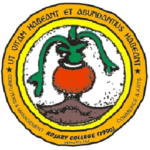Campus History
Rosary College of Commerce and Arts was established by the Archdiocese of Goa and Daman in June 1990. The College owes its inception to the magnanimous initiative of late Rev. Can. Jose Roberto Vaz, who was then the Parish Priest of Rosary Church. The College is managed by the Diocesan Society of Education and is a minority institution under article 30 (1) of the Indian Constitution.
Rosary College has been built by the Fabrica of Nossa Senhora do Rosario, Navelim, almost entirely with the proceeds of the sale of properties belonging to the Fabrica, Confraria de Nossa Senhora do Rosario and Confraria do Santissimo Sacramento.
The College has made strident progress in the last 31 years and very recently a new, fully independent and self-sufficient wing has been constructed due to the initiative of the Principal Rev. Dr. Simao R. Diniz. The new wing, which became fully functional from the academic year 2012-13, was constructed on account of a gamut of new courses introduced to keep pace with the burgeoning requirements of the industry.
Rosary College of Commerce and Arts has helped many students live their dreams! Right from its genesis, Rosary College has made quantum leaps in progress whether it is the recent re-accreditation with an A-grade with a CG PA of 3.29 on a 4-point scale by NAAC, the quality of education imparted, the professional success of its alumni or the fact that Rosary College was the Goa University Sports Champion College for three years in succession. Rosary College has constantly endeavoured to reach the acme against all odds and this is what positions it in a league of its own and makes it a true harbinger of positive change in society!
Vision and Mission
Our Vision : An educative community marked by justice, co-operation and integrity.
Our Mission: To empower young women and men, especially the underpriviledged as responsive citizens through holistic education.
Our Objectives
- To sensitize our students to the needs of the community with a special focus on minority and underpriviledged sections of the society.
- To empower students with the necessary skills so as to enable them to play an active role in national development and to become globally competent.
- To strengthen the secular, democratic and non-discriminative spirit among the students through value-based education.
- To use modern technology for effective teaching and learning.
Significance of the Emblem

This is an adaptation of an ancient symbol prevailing in India. This symbol reached Sri Lanka (2nd – 3rd Century), Chansen and Dvaravati in Thailand and OC EO in Ancient Cambodia. According to Robert S. Wicks (1999) independent waves of Indian influence presumably penetrated Southeast Asia at different rates and were absorbed unevenly from one region to another. Indian elements were selected, absorbed and altered accordingly to the needs and beliefs of local inhabitants.
This is an ever-flowing vase with two budding tendrils known as Vase of plenty (Purnagatha). The purnaghata motif has a long history in Indian art. The purnaghata is an emblem of fruitfulness and plenty. The tendrils represent growth. This symbol has been adapted from a 6th – 7th century silver medal (presently displayed at National Museum, Bangkok) discovered in a reliquary deposit found beneath of ruins of a chedi (stupa) at Nakhorn Pathom in 1943, known earlier as Dvaravati which is situated in the central part of present day Thailand. The same symbol has been also found on coins, toilet trays and ivory combs. In order to make a medal or coin a small bead of pre-weighed silver was pounded flat and it was placed between dies and stamped.
The Latin quotation “UT VITAM HABEANT ET ABUNDANTIUS HABEANT” is from John 10, 10 (They may have life and have it to the full). Rosary College is an ever-flowing vase of plenty, offering an educative environment to its students, staff and faculty. It offers an integral education far from the myopic goal of obtaining a mere degree. Its constituents should grow, bloom and blossom taking advantage of the abundance that is offered and live their lives to the full. The curvature of the circle has been kept intact as in the original medal to indicate our journey towards perfection.
